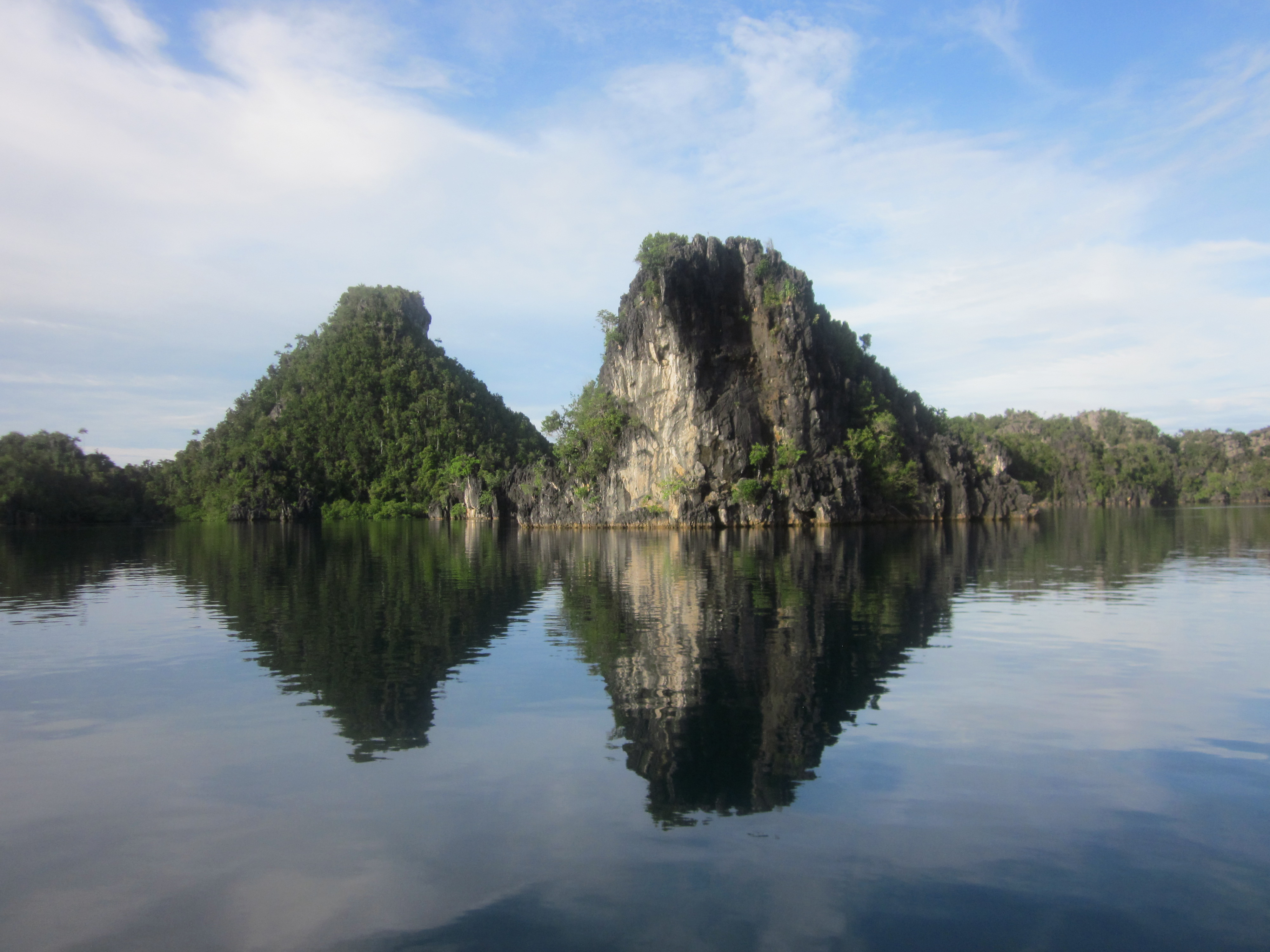Science News
Protecting the Ocean's Jewel
January 2, 2013
by Barbara Tannenbaum

Academy scientist John McCosker describes a healthy, tropical shallow coral reef as an intricate network of shape, motion, and color. “The variety, amount, and numbers of coral, fish and invertebrates is impossible to describe,” he says. “It’s visually overwhelming.” In contrast, a reef damaged by dynamite, poison, or other methods of excessive resource extraction, appears as an ash-gray scar of calcium carbonate rubble along the ocean floor.
McCosker knows the difference first-hand. He made his first dive in the tropical Indo-Pacific with the Scripps Institution of Oceanography in 1972 in the vicinity of Raja Ampat. Recently, he accompanied Terry Gosliner, the Academy’s Dean of Science and Research Collections on a scouting expedition to Northwestern Papua in Indonesia. “There is no comparison between a healthy coral reef and one that’s been dynamited,” says McCosker. “That said, Raja Ampat remains one of the least inhabited and most pristine areas of the Coral Triangle.”
Many are working to keep it that way. The trip, explains Gosliner, is an initial step in what will be a five-year collaboration with the government of Indonesia, LIPI (the Indonesian Institute of Sciences), Conservation International, Papuan Indonesian scientists, educators and local fisherman. The Academy will work with Papuan residents to provide baseline documentation and training that will strengthen their effort to monitor and protect their newly formed marine sanctuaries.
Gosliner is working to complete a Memorandum of Understanding with the Government of Indonesia that will identify marine sites off of Birds Head peninsula where Academy scientists and their partners will document the biodiversity of those coral reefs.
Academy scientists will use the same methodology employed during the 2011 Hearst Philippines Biodiversity Expedition. Gosliner hopes the five-year effort will also settle an ongoing question among scientists—exactly where is the richest part of the ocean? “Some say it’s the Verde Island Passage in the Philippines,” Gosliner says, “others say it’s Raja Ampat. We hope to gather enough data to compare the two areas.
“Coral reefs are actually far more resilient than people realize,” says Gosliner. “We’ve seen transformation of once-decimated reefs into productive, recovering ecosystems. The key is to work with the local population to adopt sustainable practices. We will survey the biodiversity. But it’s just as important to build relationships with Indonesian scientists.”
The Academy, Gosliner explains, is not a newcomer to the issue of sustainability. “It’s been part and parcel of what we’ve done throughout our entire history. But we’re stepping up our efforts because the issue is so urgent and the challenges we face today are so great.”
Barbara Tannenbaum is a science writer working with the Academy's Digital Engagement Studio. Her work has appeared in the New York Times, San Francisco Magazine and many other publications.
Image: Terry Gosliner